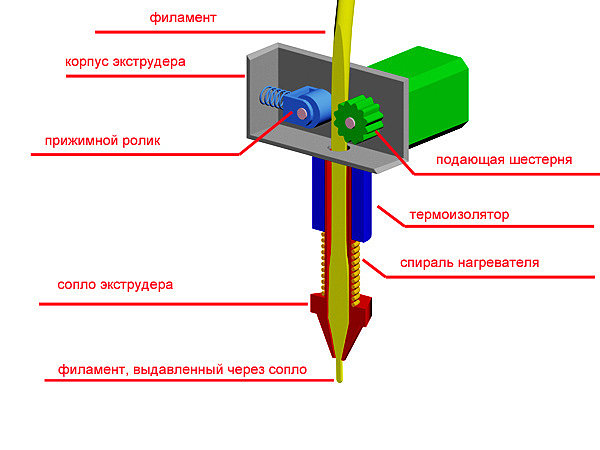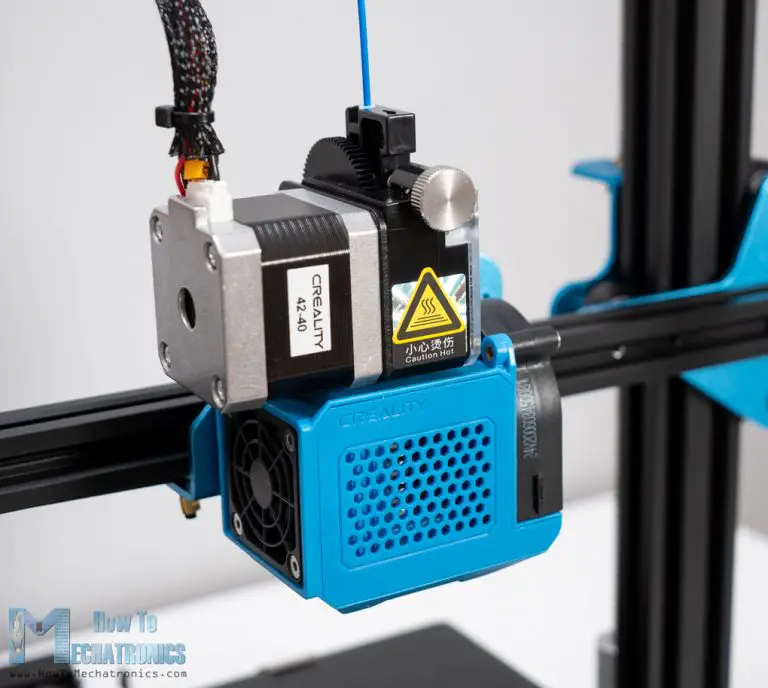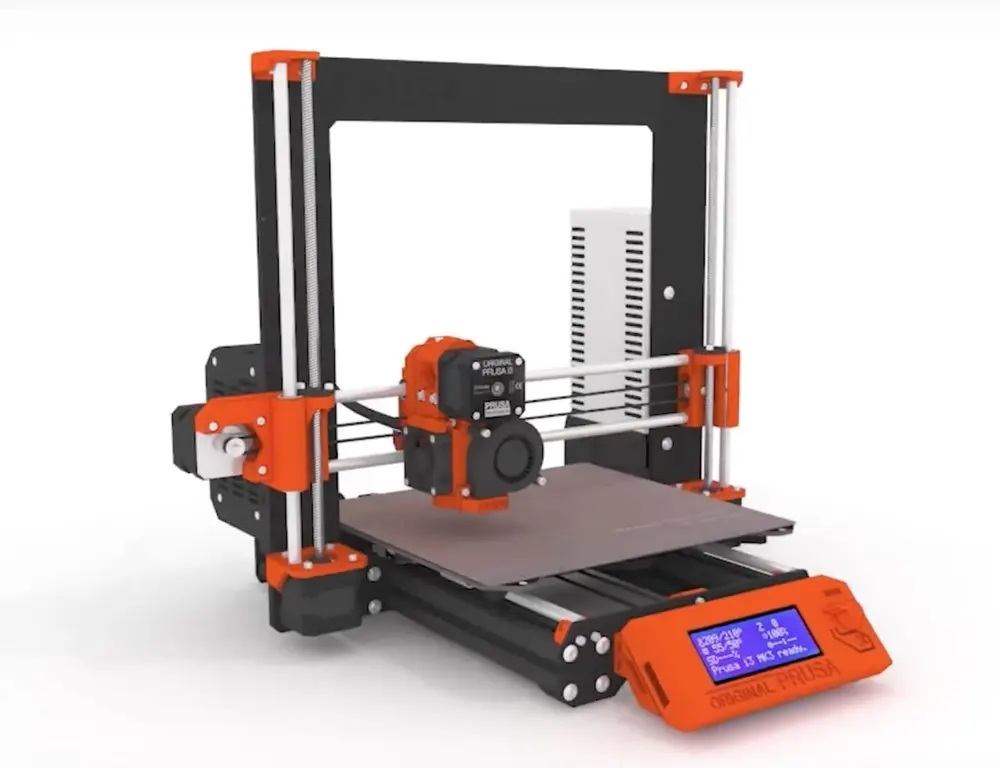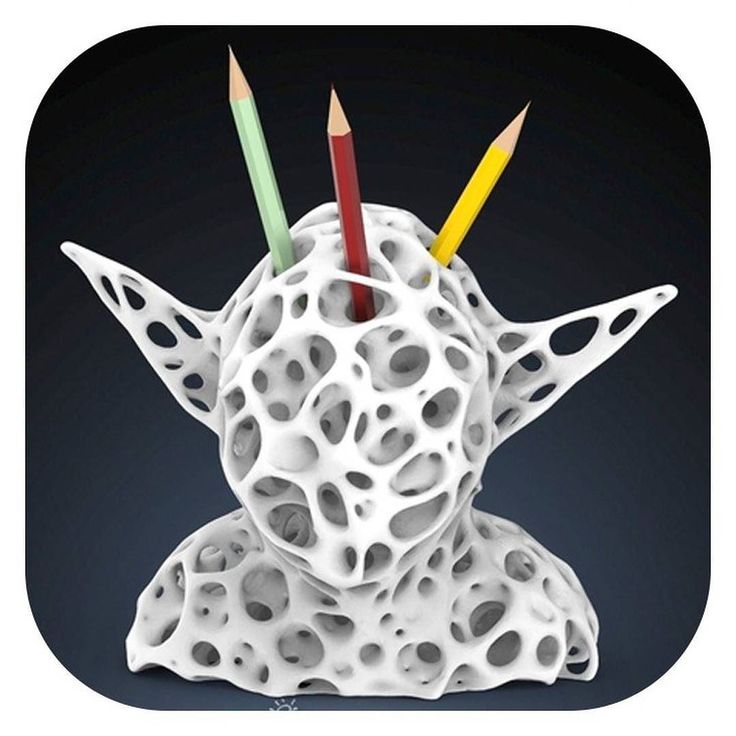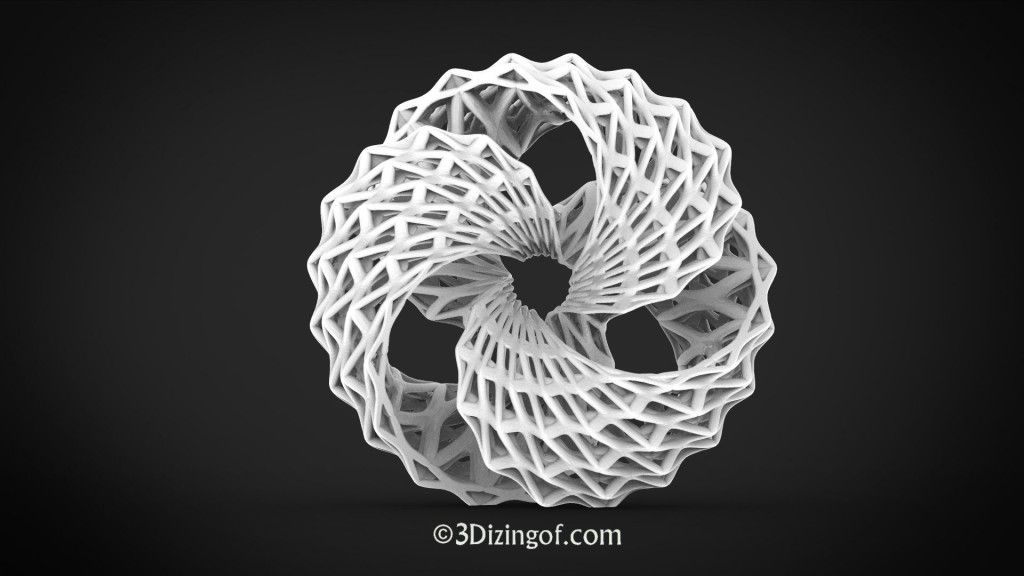Fdm 3d printer types
The Types Of FDM 3D Printer
Published on August 5, 2022 by Alex M.
When we talk about 3D printers, a number of 3D technologies might come to mind. If we focus on FDM (fused deposition modeling), we can find different types of interesting machines that aim to achieve different results. As we know, FDM technology is based on the extrusion and deposition of molten material layer by layer on a printing plate. The most common filaments used with this process are PLA and ABS, although other more technical thermoplastics such as PETG, ASA, Nyon, Ultem, etc. can also be used. In this comprehensive guide, you can find out about the differences between Cartesian, polar, delta, hybrid printers, as well as printers which use robotic arms and the general operation of a 3D printer.
1. Cartesian FDM 3D Printers
Cartesian 3D printers are the most common FDM 3D printer found on the market. Based on the Cartesian coordinate system in mathematics, this technology uses three orthogonal axes- X, Y, and Z- to determine the correct positions and direction of the print head. Depending on the model and manufacturer of the printer, the print platen of this machine will be in charge of the Z axis, allowing the extruder to be positioned on the X and Y axes, so that it can move in four directions.
Two well-known brands in the Fused Deposition Modeling market that use Cartesian technology for their FDM 3D printers are Ultimaker and MakerBot. The main advantage of these solutions is that they are generally inexpensive and are sold as kits to be assembled by the user.
2. Polar 3D FDM Printers
Polar 3D printers’ positioning is not determined by the X, Y, and Z coordinates, but by an angle and length. The coordinate sets describe points on a circular grid instead of a square, not determined by X, Y and Z axes, but by angle and length. This means that the plate rotates and moves at the same time, with the extruder moving up and down. These printers are ideal for objects which follow a spiral, such as a plant vase or traffic cone.
This means that the plate rotates and moves at the same time, with the extruder moving up and down. These printers are ideal for objects which follow a spiral, such as a plant vase or traffic cone.
The main advantage of Polar FDM 3D printers is they only two engines, whereas Cartesian printers need at least three. In the long term, the polar printer has greater energy efficiency and can make larger objects while using less space. However, polar printers have an inconsistent accuracy; as they rotate in a circle, there is much more accuracy in the centre than in the outer area.
3. Delta FDM Printers
These printers are being seen more and more on the FDM 3D printing market. They operate with Cartesian coordinates. This involves a circular printing plate that is combined with an extruder that is fixed at three triangular points (hence the name ‘Delta’). Each of the three points then moves up and down and left and right, thereby determining the position and direction of the print head. Therefore, the manufacturing limits of these machines are defined solely by the diameter of the base and the height of the arms. Delta printers, with a fixed print tray, were designed to speed up the printing process. Another advantage of Delta printers is that they can be resized, without affecting quality. However, they can prove more difficult to calibrate.
Each of the three points then moves up and down and left and right, thereby determining the position and direction of the print head. Therefore, the manufacturing limits of these machines are defined solely by the diameter of the base and the height of the arms. Delta printers, with a fixed print tray, were designed to speed up the printing process. Another advantage of Delta printers is that they can be resized, without affecting quality. However, they can prove more difficult to calibrate.
4. FDM 3D Printing with Robotic Arms
Robotic arms are most commonly known for assembling components on industrial production lines, especially in large automotive plants. While 3D printing has begun to incorporate robotic arms into their production process, most notably seen in the 3D printing of homes and buildings, this technology still remains in the development stage. Robotic arms are primarily used for the assembly of parts.
Robotic arms are primarily used for the assembly of parts.
Although not a commonly used printing process, this FDM printing method is beginning to see an increase in use. This is because the process is not fixed to a printing plate, making it much more mobile. In addition, thanks to the flexibility when positioning the FDM 3D printer head, it is easier to create complex structures, which are sometimes larger thanks to the length of the arms. It should be noted, however, that the final print quality is still far from that of conventional Cartesian printers, so many companies are working on developing it. Major manufacturers of robotic arms include Kuka and ABB, whose solutions are used by many companies including COBOD and Massive Dimension.
Hybrid 3D printers
Hybrid manufacturing is defined as a combination of additive (3D printing) and subtractive (CNC machining, milling) methods in a single solution. It is a machine that allows the exchange of tools for model creation. In the case of FDM 3D printers that incorporate subtractive heads, most tend to have a Cartesian structure. However, there are other cases, such as the Kraken project, which rely on a robotic arm capable of extruding material, but which also use subtractive methods, making it a hybrid manufacturing project. It should be remembered that any solution that incorporates both technologies will have a higher price tag, although the benefits can be far greater as it expands the capabilities of part creation.
It is a machine that allows the exchange of tools for model creation. In the case of FDM 3D printers that incorporate subtractive heads, most tend to have a Cartesian structure. However, there are other cases, such as the Kraken project, which rely on a robotic arm capable of extruding material, but which also use subtractive methods, making it a hybrid manufacturing project. It should be remembered that any solution that incorporates both technologies will have a higher price tag, although the benefits can be far greater as it expands the capabilities of part creation.
Hybrid 3D printers offer more printing possibilities.
Which type of FFF / FDM 3D printer do you use? Let us know in a comment below or on our Facebook and Twitter pages. Don’t forget to sign up for our free weekly newsletter, with all the latest news in 3D printing delivered straight to your inbox!
The 4 Types of FDM 3D Printer Explained (Cartesian, Delta, Polar & Scara)
FDM 3D printers have existed since the late 1980s, but only in the last decade have become affordable 3D printer options for the everyday maker. Unbeknownst to most, there are 4 different types of FDM 3D printer. So, if you are unsure whether a Cartesian 3D printer, Delta 3D printer, Polar 3D printer, or even a Scara 3D printer is best suited to your needs, this article will explain all.
Unbeknownst to most, there are 4 different types of FDM 3D printer. So, if you are unsure whether a Cartesian 3D printer, Delta 3D printer, Polar 3D printer, or even a Scara 3D printer is best suited to your needs, this article will explain all.
- This article discusses the different types of FDM 3D printer. We also have an article explaining every different type of 3D printer.
This buyer’s guide analyzes the differences between each of the four main types of FDM 3D printer based on your needs, and recommends the 3D printers we feel are best within each 3D printer type. We explain how each type of 3D printing came to prominence, the advantages and disadvantages of each, and niches that each type of FDM 3D printer fulfills especially well.
Cartesian 3D Printers
Cartesian 3D printers are the most common FDM 3D printer type. Name a 3D printer you like, and it will almost certainly be a Cartesian 3D printer. These were the first printers that emerged from the RepRap 3D printer movement over a decade ago that brought 3D printer prices down from tens of thousands of dollars, down to a few hundred currently.
Fun fact: Cartesian FDM 3D printers are named after the Cartesian coordinate mathematical system first discovered by René Descartes back in the 17th century.
These types of FDM 3D printer follow the exact same mathematical pattern: they rely on X, Y, and Z coordinates to place a print head in the correct place to print the plastic filament.
A basic model of how a Cartesian 3D printer operates.Usually the print head moves on the X- and Y-axes, whilst the print head or bed moves up and down on the Z-axis. Some 3D printers move the extruder up and down for each layer, whereas some Cartesian 3D printers have the print bed move up and down instead. This creates an overall strong printing structure, leading to consistent, accurate and steady prints.
They are simple, reliable and can be easily disassembled and upgraded, leading to a number of excellent 3D printer kits being developed, such as the popular Ender 3.
3DSourced is reader-supported. When you buy through links on our site, we may earn an affiliate commission. Learn more
Learn more
Best Cartesian 3D Printer Options
| Name and brand | Build volume (mm) | Price | Best price available at: |
|---|---|---|---|
| Creality Ender 3 | 220 x 220 x 250 | $220 | Amazon here |
| Dremel 3D45 | 254 x 154 x 170 | $1,400-$1,900 | Amazon here |
| Ultimaker S3 | 230 x 190 x 200 | $3,850 | Dynamism Store here |
| Raise3D Pro2 | 305 x 305 x 300 | $3,999 | Dynamism Store here |
This is why many successful 3D printer companies have opted to build Cartesian FDM 3D printers, including Creality, Makerbot, Ultimaker, Raise3D and many more. Though other types of FDM 3D printer have become more popular in the last two years, Cartesian 3D printers are still the main FDM printer type in use today.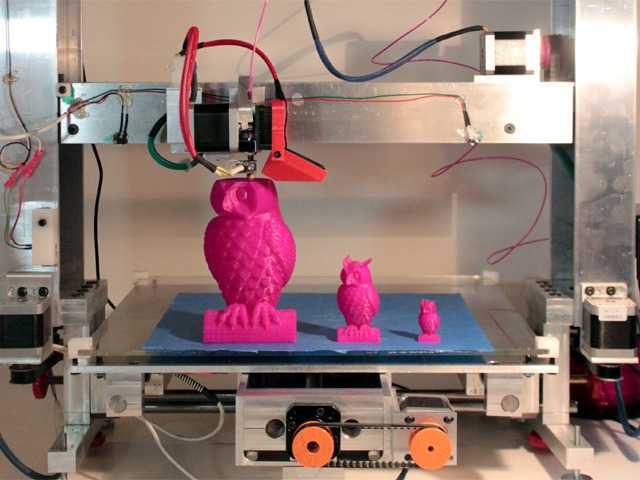
For filaments for Cartesian and Delta 3D printers, we recommend the following:
- Matterhackers ABS filament
- Matterhackers PLA filament
- Matterhackers PETG filament
Delta FDM 3D printers
Though not as popular as Cartesian 3D printers, delta 3D printers are becoming increasingly seen as FDM technology advances and becomes cheaper. Popular Delta 3D printers include FLSUN‘s printers, as well as the very affordable Monoprice Mini Delta.
| Name and brand | Build volume (mm) | Price | Where to buy |
|---|---|---|---|
| Monoprice Mini Delta | 110 x 110 x 120 | $167 | Amazon here |
| FLSUN Q5 | 200 x 200 x 200 | $299 | Amazon here |
| FLSUN QQ-S | 255 x 255 x 360 | $379 | Amazon here |
Delta 3D printers involve a circular print bed with a 3D printer extruder featuring three fixed triangular points. Each of these three points can move both upwards and downwards within the cylinder print structure, to be able to place the print head where it needs to be to print.
Each of these three points can move both upwards and downwards within the cylinder print structure, to be able to place the print head where it needs to be to print.
Delta printers first came to prominence via early RepRap designs, that advanced and became well-loved models like the Rostock and Kossel. Companies like WASP have since taken delta 3D printing to the next level, building some of the fastest 3D printers in the world, as well as delta clay 3D printers.
Overall, Delta 3D printers are very similar to Cartesian printers, though there are some slight differences.
- You can view our full delta 3D printer buyer’s guide here.
Cartesian vs Delta 3D Printers: Comparison
The major difference between these two types of FDM 3D printer is where each printer type can print compared to where the print bed is.
For example, in a Cartesian 3D printer each part can only move in one direction — a certain distance down each axis. However, within a Delta 3D printer, the print head is more flexible and can move in any direction, and instead the print bed stays still.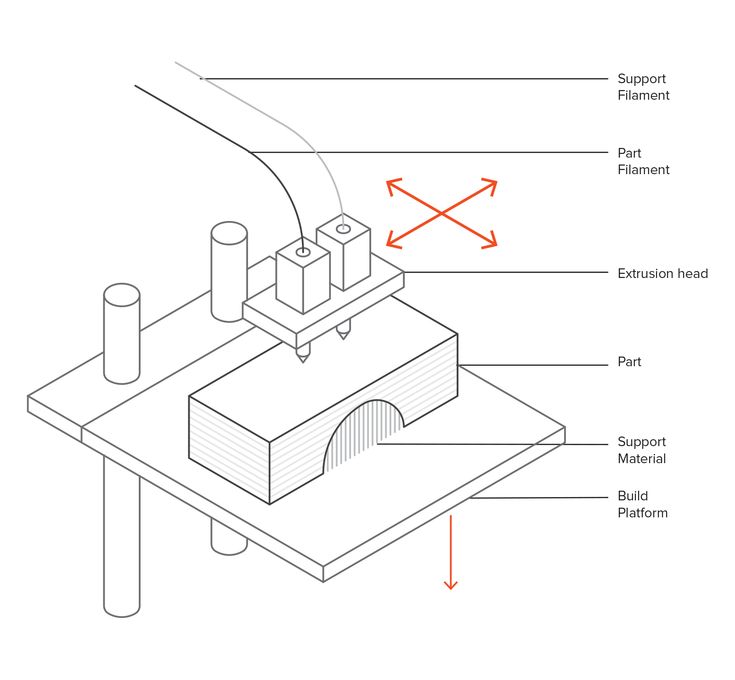
Delta printers are slimmer and taller — they require more height but also offer the ability to print taller structures as a result. So if you’re printing tall parts, go for a Delta 3D printer. Though Cartesian printers must be larger than the same delta printer to have the same build volume, they are consistent and do not lose accuracy towards the edges of the print area.
These differences create a trade-off: Cartesian 3D printers are considered more accurate, with better quality prints; Delta 3D printers are however considered to be faster. The print quality difference, if any, is minimal, whereas the speed of delta 3D printers is exponentially higher than Cartesian 3D printers.
Cartesian 3D printers are also best for printing flexible filaments like TPU, as they often use direct drive extruders which are considered better for flexibles than Bowden extruders, which always feature on delta 3D printers. So for makers looking to print flexible parts, such as 3D printed shoe soles, tires, door stoppers and other parts, you’ll prefer a Cartesian printer.
So for makers looking to print flexible parts, such as 3D printed shoe soles, tires, door stoppers and other parts, you’ll prefer a Cartesian printer.
If you are choosing between a Cartesian 3D printer or a delta printer, think about whether your priority is speed, or print quality and consistency.
Polar 3D Printers
- Notable polar 3D printers: Polar 3D.
Polar 3D printers aren’t as similar to Cartesian printers as Delta, but there are again some aspects that will seem familiar.
They’re called polar because they use a polar coordinate system, whereby every other point on the print bed is determined by its position compared to the central point in the middle of the print bed. This sounds complex, and is difficult for our brains to compute, as each point is not a nominal place but is relative to this central point.
Polar 3D, a polar 3D printer that debuted at CES a few years back.As a result, instead of the square or rectangle print beds on Cartesian printers, Polar 3D printers have circular print beds that rotate and lift up and down to allow for efficient 3D printing.
Fun fact: though the term polar coordinates is attributed to Gregorio Fontana, Alexis Clairaut first conceived of polar coordinates across three dimensions, whilst Swiss mathematician Leonhard Euler was the first person to develop them.
Calculating distance and angle from the central point, with a print bed that spins itself into the correct position, means that an overhanging structure for the extruder and hot end is not required. The L-shaped Polar 3D printer build (rather than cuboid or cylindrical for Cartesian and Delta printers) is efficient, and means that very little maximum build area is lost, with quite large parts printable on a relatively small 3D printer — a massive advantage if you don’t have much space.
Additionally, Polar 3D printers require just two engines to print, working with just angle and length in calculating print areas. On the other hand, Cartesian and Delta printers typically require 3 engines to power each axis. This is theoretically more efficient in terms of energy usage.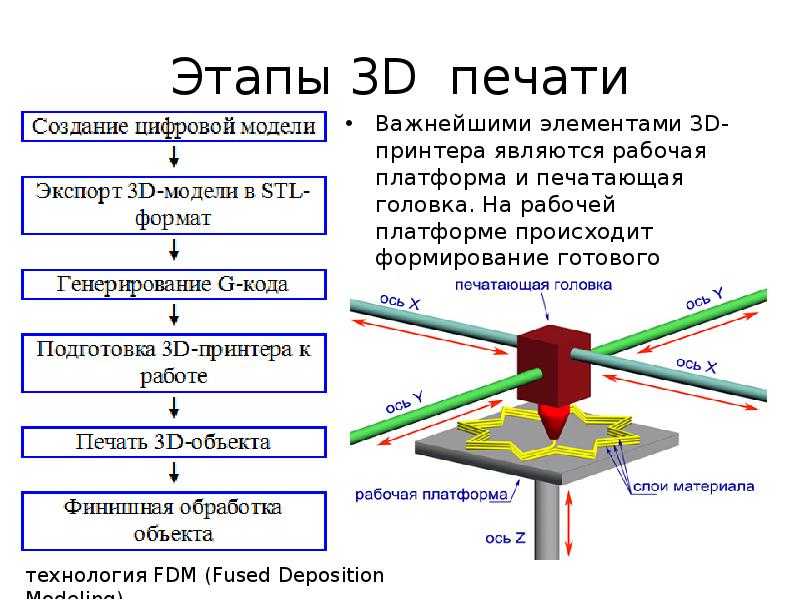
SCARA / Robotic Arm 3D Printer
- Example printer: RepRap Morgan, Dobot 3D printer, house 3D printers
The last, and strangest type of FDM 3D printer, are robotic arm 3D printers, also known as SCARA 3D printers.
SCARA stands for Selective Compliance Assembly Robotic Arm.
If you’ve ever been inside an industrial manufacturing plant, or seen clips of one on the news, you’ll have seen huge mechanical arms, welding metals or assembling parts. These robotic arms, used for 3D printing, are scara 3D printers.
Undoubtedly, these are the coolest looking printers. However, we won’t exaggerate like these are already accessible and you can pick one up for a few hundred dollars — these are not cheap like Cartesian printers yet. In fact, most Scara 3D printer applications are in the building of 3D printed houses and other industrial projects.Robotic arms are increasingly used in 3D printing, especially in large, industrial projects like houses.
Advantages of robotic arm 3D printers include additional flexibility when printing. This is because printing is not fixed to a print plate and is therefore more mobile and versatile, making it easier to print geometrically complex parts. Scara 3D printers move in the most similar way to human hands, and print faster than Cartesian printers.
This is because printing is not fixed to a print plate and is therefore more mobile and versatile, making it easier to print geometrically complex parts. Scara 3D printers move in the most similar way to human hands, and print faster than Cartesian printers.
However, there are trade-offs with print quality in most cases. When 3D printing large cement walls these slight imperfections aren’t an issue, however when printing intricate, small parts, Scara 3D printers cannot effectively compete with those such as Cartesian or Polar 3D printers.
At a certain size, super large 3D printers have to become Scara 3D printers. This is because for printing huge structures, like houses, you have to be able to move the house 3D printer to the location. Cartesian and delta 3D printers have structures around them, with the large cube or cylindrical structures making them suitable for remaining stationery in a factory, such as for rapid prototyping. Scara 3D printers on the other hand are better suited as industrial 3D printers.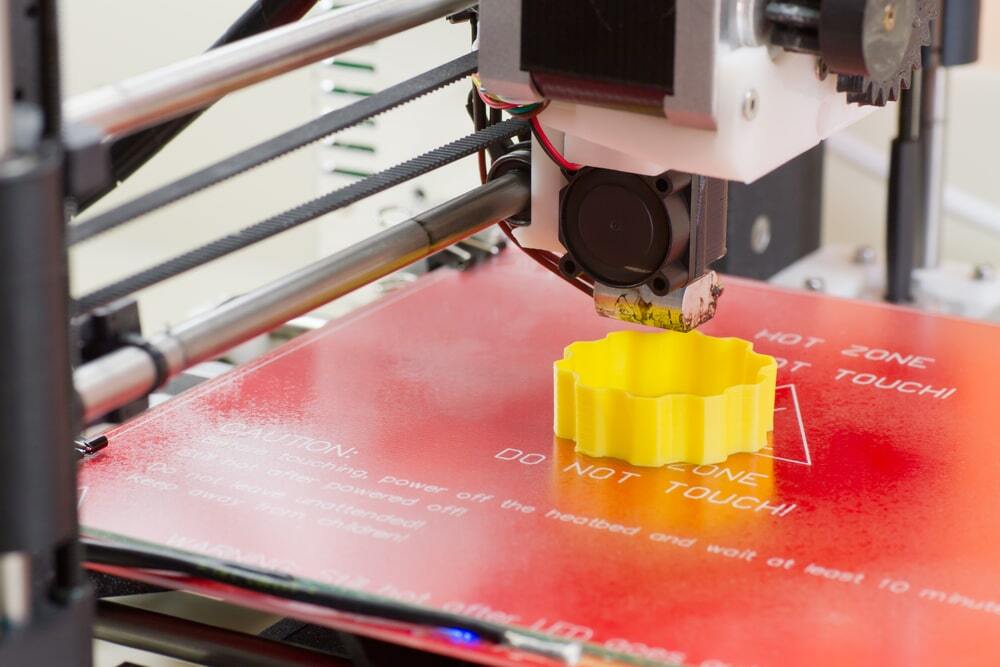 Huge robotic arms can be moved to the site of the build, as we have seen with house 3D printing projects like Apis Cor, to deposit layers of cement to build walls.
Huge robotic arms can be moved to the site of the build, as we have seen with house 3D printing projects like Apis Cor, to deposit layers of cement to build walls.
We expect to see more Scara 3D printers in the future for these industrial house-building projects, so keep an eye out.
That’s it! Hopefully our guide sheds some light on which type of FDM printer is best for your printing needs. If you’re still not completely sure, we have a bunch of other great guides and rankings to help you choose, including:
- Best FDM 3D printer.
- Best dual extruder 3D printer.
- Our favorite 3D printers overall.
- The best online 3D printing services
Technologies and methods of 3D printing - ANRO technology
The active introduction of 3D technologies contributed to the creation of progressive 3D printers with a rich set of options. 's high-performance 3 D-printing technologies have produced original designs for marketing, catering, industry and landscaping.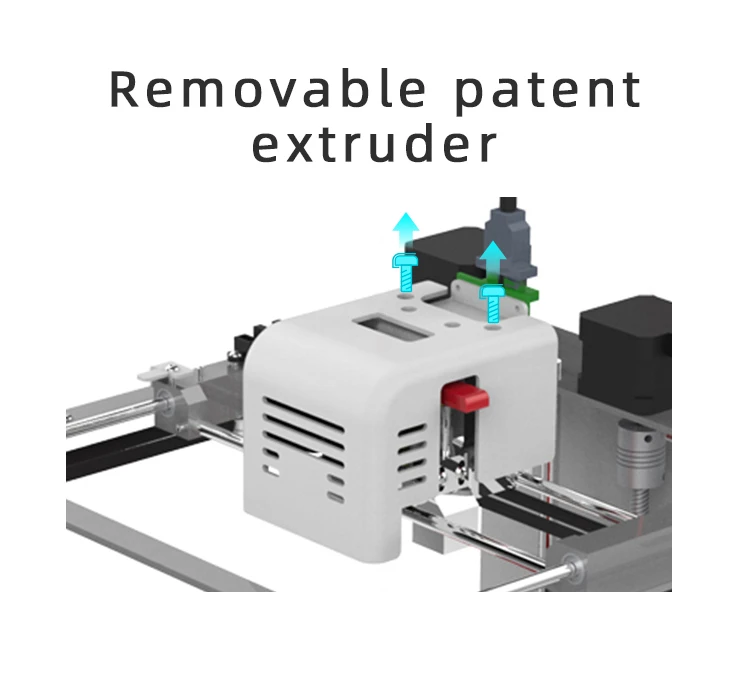
3D printing is a procedure for designing three-dimensional compositions of a given geometric shape. The process of obtaining the original model is based on the phased construction of the object with clear applied layers, clearly demonstrating the edges of the product. nine0007
Innovative 3D printing methods are in high demand in the construction industry, architecture, education, medicine, bioengineering and many other fields. Unlike traditional methods of obtaining parts - milling, turning, they allow you to achieve high accuracy, the greatest savings in materials and time.
Features of 3D printing
Designed models are reproduced using special computer graphics programs , which are designed specifically for this purpose. Building one model can take from a couple of hours to two or more days, depending on the specifics of the project. The desktop device allows designers and design professionals to turn original prototypes into reality. nine0007
nine0007
The advantage of modern technology is the efficiency and cost-effectiveness of modeling objects, for example, in the manufacture of products in production. 3D printers are indispensable for creating unique products in preschool educational institutions, building more complex samples in schools and specialized institutions. Modern technologies make it much easier to work with 3D models, so this technology becomes accessible to children. 3D modeling allows you to create objects of unique geometric shapes of varying degrees of complexity. nine0007
Basic 3D printing
- Fused deposition prototyping (FDM). An accessible modeling method, which consists in the layer-by-layer application of a hot thread from a fusible working product (wax, metal, plastic). Most often used for rapid prototyping of various models, for example, mass production of jewelry, souvenirs and toys;
- Selective Laser Sintering (SLS). One of the famous prototyping methods.
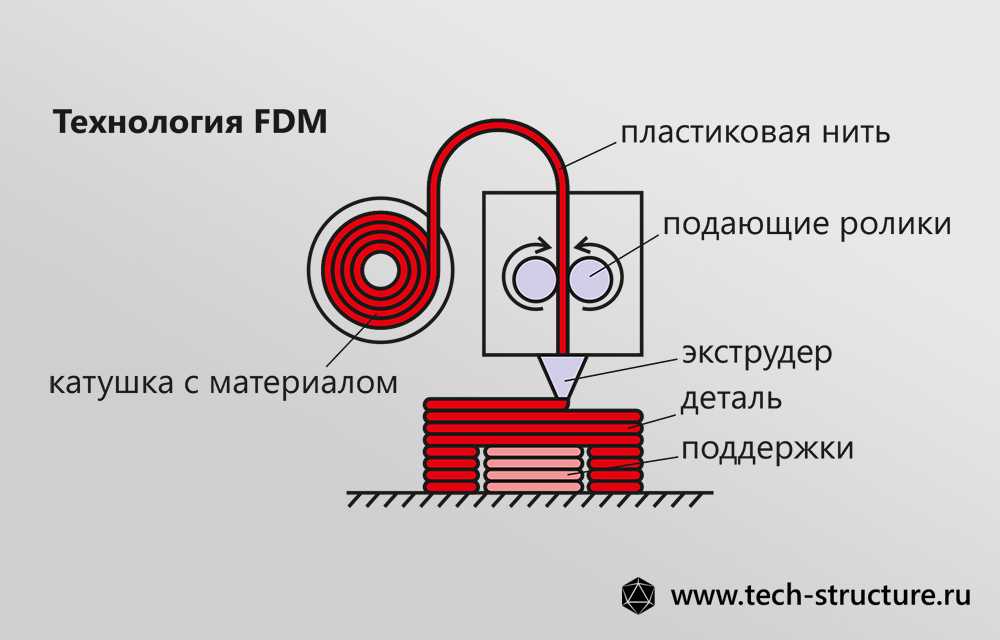 The product is formed from a powder product (ceramics, metal-plastic) by melting under the influence of a laser. The advantage of SLS is that you don't have to use a special structure to support floating elements; nine0028
The product is formed from a powder product (ceramics, metal-plastic) by melting under the influence of a laser. The advantage of SLS is that you don't have to use a special structure to support floating elements; nine0028 - Laser stereolithography (SLA). The most famous modeling method using a special liquid polymer that hardens under the influence of mercury radiation. The advantages include high print resolution, the least amount of waste and ease of finishing the product;
- Electron Beam Melting (EBM). Advanced adaptive manufacturing method using special electron beams. Widely used in the production of various titanium products. Unlike models produced by SLS, blanks are solid and highly durable; nine0028
- Production of models using lamination (LOM). Progressive way of forming various models using layer-by-layer gluing. The resulting objects can be upgraded by machining. The advantage of this technology is the availability of the main consumable material - paper;
- Multi-jet simulation (MJM).
 A popular type of printing based on multi-jet modeling of a photopolymer product. It is used in various industries. The advantages include the possibility of multi-color printing and the interaction of materials of different properties and characteristics. nine0028
A popular type of printing based on multi-jet modeling of a photopolymer product. It is used in various industries. The advantages include the possibility of multi-color printing and the interaction of materials of different properties and characteristics. nine0028
Other 3D modeling technologies are common in adaptive and industrial manufacturing. All of them have their own characteristics and nuances. However, the simplest and most popular 3 D-printing method for is Fused Deposition Modeling (FDM).
3 reasons to choose FDM technology
- Simplicity. Printing technology is accessible even to small children. Therefore, it can be used both in schools and offices, and in preschool institutions; nine0028
- Originality. FDM technology allows you to design objects with unusual geometry and cavities, which is beyond the power of other types of modeling;
- Variety.
When working with FDM technology, a wide variety of plastics can be used, which makes it possible to obtain a fairly wide range of models with different physical and chemical properties. 3D objects can be durable, flexible, luminous, soluble in water, and with many other properties. nine0028
FDM technology uses time-tested thermoplastics that are used in traditional manufacturing of various products.
Advantages of modern 3D printing technology from ANRO-technology
- High speed. Modern technologies provide short terms of product prototype development;
- Minimum material consumption. Progressive 3D printers allow you to produce objects with the lowest waste rates; nine0028
- Robust internal structure. Innovative devices help to design large objects with minimal weight;
- Environmentally friendly. The materials used in prototyping are completely safe and do not pose any harm to the user.
Additional advantages of creating a 3D object include durable and convenient storage of materials that does not require special conditions.
3D technology is the future of prototyping, because thanks to them today the most non-standard design projects are being implemented both in everyday life and in the industrial sphere.
Our company is engaged in the development and supply of 3D printers based on FDM technology. Our 3D printers with specialized software are suitable for children from 6 years old. Small 3D prints can fit at home and delight children and adults with the opportunity to print their own 3D models of objects and toys. nine0007
[/mk_custom_list]
VIEW 3D PRINTERS
What types of 3D printers are there? 3D printing technologies
This article does not pretend to be scientific, but rather a small introduction to 3D printing "for dummies".
What exactly do we mean by the concept of 3D printing?
In the early 1980s, new methods for the production of parts began to develop, based not on the removal of material, as in traditional machining technologies, but on the layer-by-layer production of a product according to a three-dimensional model obtained in CAD by adding materials in the form of plastic, ceramic, metal powders. and their bundles by thermal, diffusion or adhesive methods. And what does this mean in practice? That it became possible to create physical objects in a completely new way. nine0007
The first to patent this technology back in 1984 was Chuck Hull, who also created 3D Systems in 1986, which is still one of the industry leaders. The first commercial 3D printer, the 3D Systems SLA-1, was introduced in 1987.
Thus, we smoothly approach the story of the first and perhaps the most promising 3D printing technology today, namely photopolymer resin printing. Initially, this technology was called SLA, but over time, this name has become not entirely correct. nine0007
Photopolymer printing
The essence of photopolymer 3D printing is that a liquid photopolymer resin solidifies under the influence of light and forms a 3D model. Initially, a laser acted as a light source, and the technology was called SLA or stereolithography.
Despite the apparent simplicity, 3D Systems has spent more than 10 years to bring to market the first full-fledged commercial product. This required a shift in other technological products, such as solid-state lasers, which use a solid-state substance as an active medium. nine0007
This required a shift in other technological products, such as solid-state lasers, which use a solid-state substance as an active medium. nine0007
Without going deep into the technological wilds, we can say that about 25 years of gradual development of this technology passed until 2013-2014, when SLA 3D printers cost hundreds of thousands of dollars and were available only to large companies, where they were also used very limitedly due to the high cost as equipment and materials.
Created in 2011, a startup called FormLabs reimagined Chuck Hull's ideas and developed the first desktop SLA 3D printer, which began selling for up to $3,000. Thus, it made it possible for a wide range of users to get involved in 3D printing. Over the years, FormLabs has delivered tens of thousands of its printers to market, avoided being taken over by larger players, and became the first 3D printing unicorn to be worth over $1 billion. This story was one of two turning points in the breakthrough made by 3D printing technology in recent years.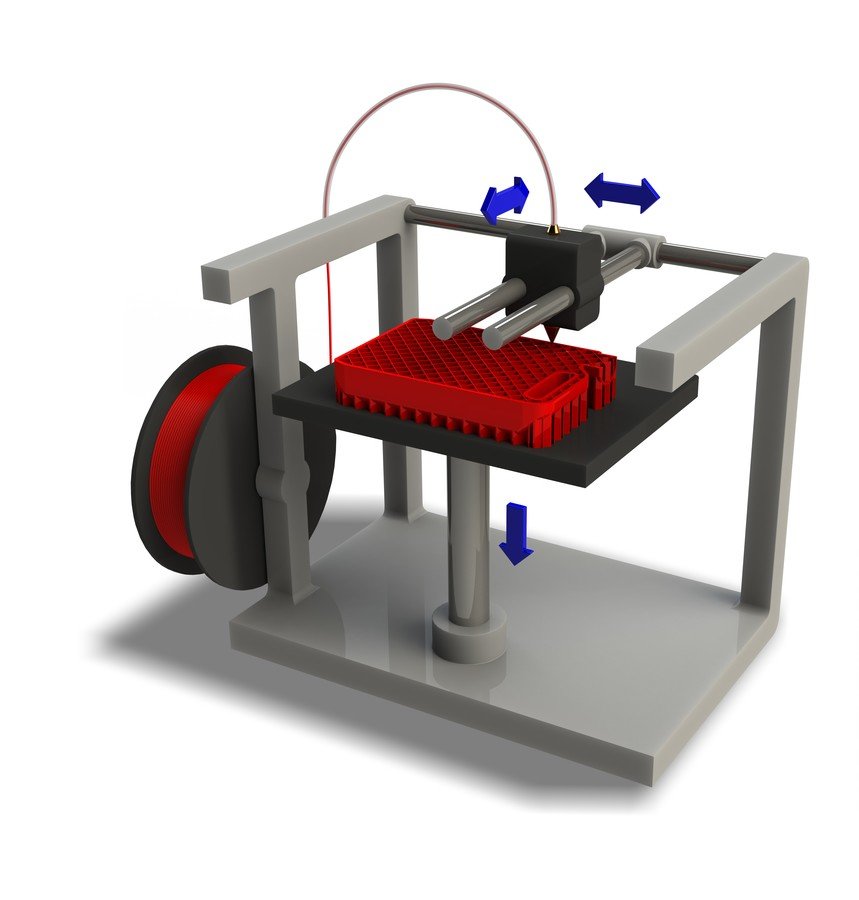 But other companies also did not stand still and very soon realized that a laser as a light source for illuminating a photopolymer resin is not the only solution, and they proposed another way to form a model, which was called DLP (Digital Light Processing) .
But other companies also did not stand still and very soon realized that a laser as a light source for illuminating a photopolymer resin is not the only solution, and they proposed another way to form a model, which was called DLP (Digital Light Processing) .
Without going into technical details, it is important to note that the advantage of this technology lies in higher productivity due to the illumination of the entire layer at once, in contrast to the laser, which must physically illuminate the entire model, so it must be constantly moved. With a simple example, it is very easy to explain what this means. Suppose you need to print a ring, this task on printers of both technologies will take about the same time, but if you need to print 10 rings at once, DLP technology will take advantage. That is, with a DLP printer, you will print 10 rings in the same time as one, while an SLA printer will spend a certain time drawing each of the rings, although this will make it possible to achieve better quality. nine0007
nine0007
A few numbers...
The Form2 SLA printer takes 11 hours and 22 minutes to print 55 models.
As a result, 12.4 minutes for one ring .
And the Uniz Slash Plus 3D printer, which is based on DLP technology, will spend only 3 hours 51 minutes printing 6 rings, it turns out one ring in 3.8 minutes . nine0007
DLP technology gained some popularity and began to compete with traditional SLA, but did not become a breakthrough, when suddenly a new revolution happened - LCD 3D printers appeared on the scene.
The principle of formation is even simpler, a powerful LED lamp, enhanced by a lens system, shines on an LCD matrix, which projects the desired image onto a polymer bath, where a 3D model is formed. nine0007
The creation of this technology in 2016 made it possible to reduce the price of a 3D printer by 10 times compared to the FormLabs Form 2 printer that was the hit of that time, the price for budget LCD 3D printers started from $300.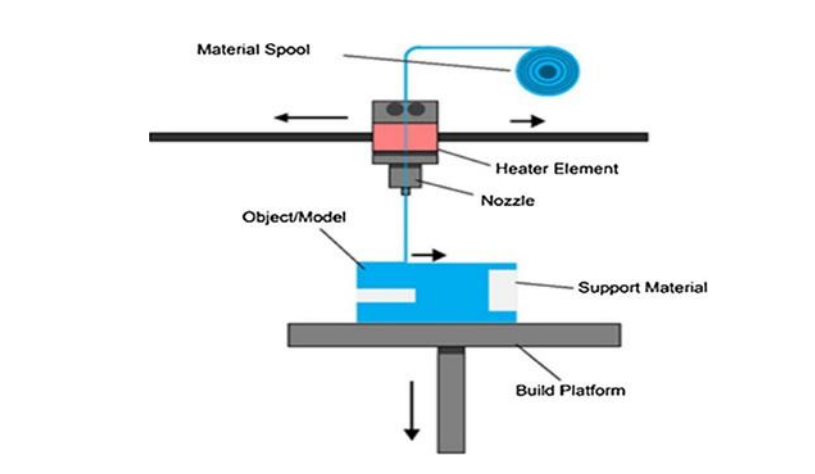 This drastic cost reduction has greatly expanded the customer base and has given home users and small print studios the opportunity to try this technology for their needs.
This drastic cost reduction has greatly expanded the customer base and has given home users and small print studios the opportunity to try this technology for their needs.
What is its advantage over others, besides the price itself? nine0007
LCD, as well as DLP printers, illuminate the layer immediately, this gives them an advantage in performance, although at first users were faced with not very high quality of the models themselves. But with the advent of 3D printers with a 2K LCD matrix in 2019, and then a little later 4K, this problem was solved, and LCD printers today are superior both in speed and in the minimum layer thickness of their older brothers.
Vivid examples of 2K resolution printers are models - Elegoo Mars, Anycubic Photon S, Wanhao GR1, Phrozen Shuffle Lite, Phrozen Shuffle 2019, Phrozen Shuffle XL 2019, Phrozen Sonic, 4K - Phrozen Shuffle 4K, Phrozen Transform.
The introduction of 8K sensors in the near future, as well as the use of special monochrome sensors that increase print speed, will make this technology dominant in the 3D printer market.
PHOTOPOLYMER 3D PRINTING TECHNOLOGIES:
I hope I was able to convey to you the essence of the differences between these technologies, but now, in fact, I want to tell you why SLA / DLP / LCD 3D printing is most often chosen. Here it is immediately worth dividing printers into industrial and desktop. nine0007
Industrial 3D printers are mainly used for large-scale prototyping, as well as small-scale production and mold making. With a sufficiently high productivity and good quality of the final products, this equipment is used in the automotive industry, aerospace industry, and also for printing massive objects, such as this mammoth bone, printed by Materialize in cooperation with the Belgian Royal Institute of Natural Sciences in Brussels. nine0007
Desktop SLA/DLP/LCD printers are widely used, primarily in such areas as dentistry, jewelry, ship and aircraft modeling, as well as the manufacture of unique gifts and souvenirs. You can read more about this in our articles on these topics.
You can read more about this in our articles on these topics.
The use of a 3D printer in dentistry
3D printing in prototyping
The use of a 3D printer in jewelry nine0007
3D printing in small-scale production
High detail and high-quality finish makes this 3D printing technology an excellent tool for solving numerous problems that previously had to be solved in much more time-consuming and expensive ways in the areas of activity that I mentioned above.
Photopolymer printing on a 3D printer in dentistry. nine0007
Photopolymer 3D printing in jewelry. On the right is a 3D printed master model of the bracelet.
Photopolymer printing for prototyping
3D Resin Printing Souvenirs
FDM 3D Printing Development Path
The second father of 3D printing can be safely called S. Scott Crump, who at 19In 1988, he patented FDM (Fused Deposition Modeling) technology, and in 1989, together with his wife, he created Stratasys, which is still one of the main companies in the industry.
Scott Crump, who at 19In 1988, he patented FDM (Fused Deposition Modeling) technology, and in 1989, together with his wife, he created Stratasys, which is still one of the main companies in the industry.
The abbreviation FFF (Fused Filament Fabrication) is also often used for this technology, but this should not mislead you. The essence of the technologies is the same, but the names are different in order to avoid patent disputes. nine0007
So, what, in fact, was invented. The essence of the idea was that a plastic thread is fed into an extruder, where it melts at a high temperature and forms a model in layers through a small nozzle.
Based on this invention, Stratasys began to produce industrial 3D printers, which were mainly used as well as the first SLA machines in the automotive industry, aerospace industry, and with the advent of various durable plastics such as polycarbonate (PC), polyetheretherketone (PEEK), polyetherimide (PEI, Ultem), polyphenylsulfone (PPSF/PPSU), and for functional prototyping. This technology did not become widespread until more than 20 years later, the RepRap (Replicating Rapid Prototyper) project, a self-replicating mechanism for rapid prototyping, appeared. nine0007
This technology did not become widespread until more than 20 years later, the RepRap (Replicating Rapid Prototyper) project, a self-replicating mechanism for rapid prototyping, appeared. nine0007
The original idea was to create a 3D printer that another 3D printer could print, in this photo all the plastic parts of the "child" are printed on the "parent". In fact, something completely different happened - a group of enthusiasts were able to create a budget 3D printer for home or office use. The idea was quickly picked up by three geeks from New York, who created the MakerBot company and began commercial production of desktop FDM 3D printers. This was the second turning point in the modern history of 3D printing. nine0007
The cost of printers was about $1000, and this price became quite acceptable for many enthusiasts, technologists, engineers and students who are passionate about the idea of 3D printing.
In 2013, MakerBot was taken over by Stratasys for a record $400 million.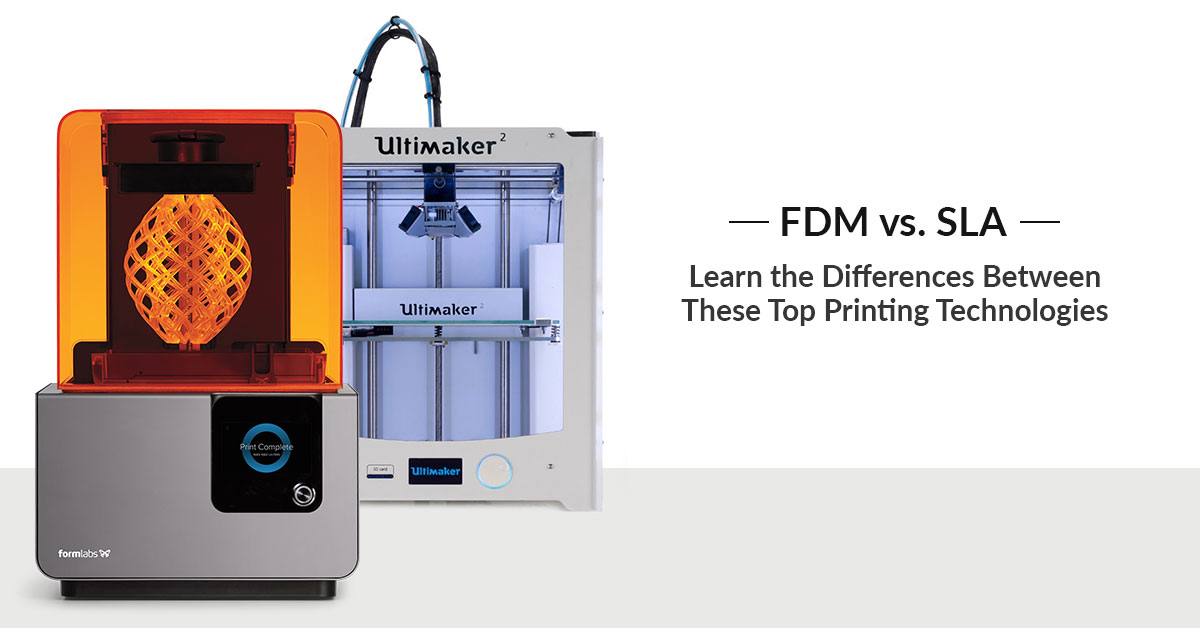 The result of all this was that the world received a very interesting technology for creating physical objects. A huge advantage of FDM technology is its cheapness and a large selection of printing materials, which began to appear in large quantities after the start of the spread of 3D printing. FDM printers primarily spread among home users, who began numerous experiments with printing at home, you can read more about this in the article 3D printing as a hobby. nine0007
The result of all this was that the world received a very interesting technology for creating physical objects. A huge advantage of FDM technology is its cheapness and a large selection of printing materials, which began to appear in large quantities after the start of the spread of 3D printing. FDM printers primarily spread among home users, who began numerous experiments with printing at home, you can read more about this in the article 3D printing as a hobby. nine0007
In addition, FDM printing has found its main professional application - prototyping. With the introduction of 3D printing into this process, it will never be the same again. Prototyping has become significantly cheaper and faster, and this made it possible to try many more ideas from engineers to create the highest quality and thoughtful products, more about this can also be found in the article 3D printing in prototyping. There are also active efforts to introduce FDM 3D printing into small-scale production, and this story took an unexpected turn during the COVID-19 epidemic. when doctors urgently needed to produce parts for ventilators, as well as mask holders for doctors who are forced to wear them all day.
when doctors urgently needed to produce parts for ventilators, as well as mask holders for doctors who are forced to wear them all day.
FDM 3D printing was able to fully demonstrate its main advantages compared to classical production, namely the speed of modeling a new model and launching it into series in the shortest possible time, less than one day.
Another major advantage of FDM printing is the wide choice of materials, ranging from biodegradable PLA plastic to materials such as PEEK, which can be sterilized at high temperature and pressure. nine0007
In the near future, we expect the widespread introduction of so-called "3D printing farms", which will be able to implement the concept of "flexible production", the essence of which is that such a farm can produce any available product, and not specialize in the manufacture of any specific products. , as happens in a classic production. Today it can be spare parts for old models of railway cars, and tomorrow it can be medical mask holders or souvenir cups for competition winners or plastic end caps for furniture. nine0007
nine0007
In the meantime, let's continue our story about the different types of 3D printing that arose in parallel with the development of the two mainstream technologies that I have already talked about. Many engineers and entrepreneurs in different countries and companies have realized that it is possible to start using the principles of 3D printing using other materials and ways of forming models, and this is what they came up with.
Other 3D printing
SLM (Selective Laser Melting) - selective laser melting, also called DMLM and LPBF. The principle of 3D printing here is that, under the influence of a powerful laser, metal powder melts and forms a 3D model. This allows you to create models of complex shapes and high strength, most of all this technology has been used in aerospace and medicine. A rocket is not a mass product, and some elements are much more convenient and more profitable to print on a 3D printer than to mill or cast.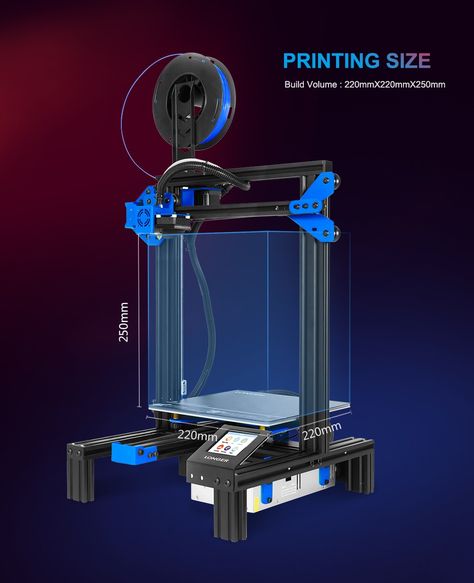
Pictured above is the world's largest printed rocket engine. It was printed on the SLM 800 printer by SLM Solutions for the British aerospace company Orbex. The engine is manufactured as an all-metal nickel alloy product. SLM 3DSLM 3D printing has reduced time by 90% and costs by 50% compared to CNC machines.
In medicine, metal 3D printing has begun to be used to create individual titanium implants made directly for a particular patient, which significantly increases the chances of recovery. nine0007
EBM (Electron Beam Melting) - electron beam melting. This is a technology similar to SLS/DMLS, only here the object is formed by melting a metal powder with an electron beam in a vacuum.
SLS (Selective Laser Sintering) is selective laser sintering, another very interesting technology. The model formation process here is the same as in SLM, but instead of metal powder, polyamide or nylon powder is used.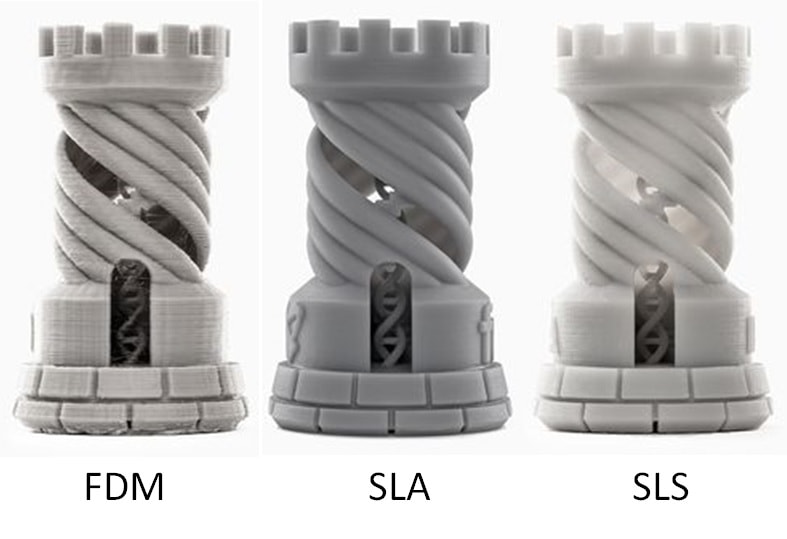 This makes it possible to form very strong, wear-resistant products of complex shapes, which, first of all, can be used as functional prototypes of future metal or durable plastic products. nine0007
This makes it possible to form very strong, wear-resistant products of complex shapes, which, first of all, can be used as functional prototypes of future metal or durable plastic products. nine0007
SLS Printed Engine Manifold
SLS printed furniture
MJF (Multi Jet Fusion) is an original technology developed by HP that essentially repeats the principle of SLS, but does not use a laser. This gives the printer a certain performance advantage over laser technology, as it bakes the layer immediately, just as it does with LCD 3D printers, which we wrote about in detail earlier in this article. Being one of the world's technology giants, HP quickly broke into the small 3D printing market and quickly took a large share in the industrial equipment segment, unfortunately, as of 2020, HP has not started shipping its 3D printers to the Russian market. nine0007
nine0007
Surgical instrument and cylinder block printed on MJF printer
PolyJet is a technology similar to conventional inkjet printing. Liquid polymer is fired through many tiny nozzles onto the surface of the printing platform, after which they are cured using ultraviolet radiation. Using this technology, you can create high-quality full-color layouts and prototypes with the highest level of detail and finish quality comparable to industrial serial samples. Unfortunately, the high cost of equipment and materials does not allow a wider implementation of this technology. nine0007
MJM (Multi Jet Modelling) is a multi-jet modeling technology similar to PolyJet, but wax can also be used as a material. The technology was developed by 3D Systems, therefore, for reasons of patent protection, it has a different name. Wax printing is widely used in the jewelry business for making individual models to order and creating master models. There are also specialized printers from SolidScape that print with a two-component wax for subsequent melting of the support material in hot water. nine0007
There are also specialized printers from SolidScape that print with a two-component wax for subsequent melting of the support material in hot water. nine0007
CJP (Color Jet Printing) is a technology, the essence of which is layer-by-layer gluing and coloring of powder based on gypsum or plastic. With this technology, you can create full-color products, and this is most often used for printing architectural models and figures of people. The cost of printing in this case is lower than with PolyJet technology, which gives more opportunities for its wider use.
nine0007
LOM (Laminated object manufacturing) - a technology similar to CJP, but here the building materials are paper, each sheet of which is glued to the previous one, painted with an inkjet printer and perforated. This gives a full color 3D model and is also well suited for architectural and decorative models.
Another technology with great prospects is the combined technology of metal 3D printing, which combines 3 stages of creating a model: printing on an FDM printer with a special composite thread, where metal and polymer are mixed in certain proportions, melting the polymer and baking the metal model. Based on this technology, the American companies DeskTop Metal and MarkForged have already created their commercial models of 3D printers and started selling them both in America and Europe, but so far the technology is very crude and does not guarantee good quality of finished products. But its huge advantage is the significantly lower price of both printers and finished products. These systems have not yet been delivered to Russia, so we are waiting for the opportunity to independently evaluate their quality and effectiveness. In the next few years, this technology may become the most popular of all possible 3D printing methods. nine0007
Based on this technology, the American companies DeskTop Metal and MarkForged have already created their commercial models of 3D printers and started selling them both in America and Europe, but so far the technology is very crude and does not guarantee good quality of finished products. But its huge advantage is the significantly lower price of both printers and finished products. These systems have not yet been delivered to Russia, so we are waiting for the opportunity to independently evaluate their quality and effectiveness. In the next few years, this technology may become the most popular of all possible 3D printing methods. nine0007
Studio System+ by Desktop Metal
How it works:
3D printing with ceramics is also a promising direction in various industries. There are a number of companies that produce equipment that prints ceramic models. Various manufacturers use the already mentioned DLP and SLA for this, as a slightly adapted multi-jet simulation technology Ceramic binder jetting (CBJ) .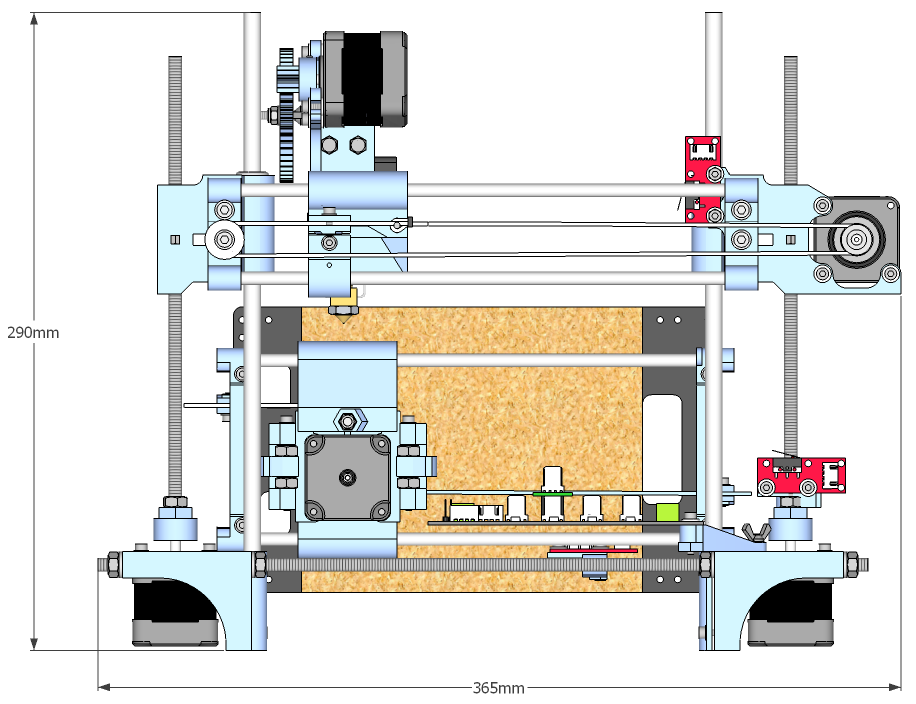 This seal is used in dentistry, jewelry, as well as to create high-quality prototypes with the necessary functional properties. Also, on the basis of FDM printers, printers are being created that print with clay to create ceramic products in a new way. For example, the Italian company WASP has been offering such systems for several years based on its delta printers that print with plastic filament.
This seal is used in dentistry, jewelry, as well as to create high-quality prototypes with the necessary functional properties. Also, on the basis of FDM printers, printers are being created that print with clay to create ceramic products in a new way. For example, the Italian company WASP has been offering such systems for several years based on its delta printers that print with plastic filament.
nine0118 Construction 3D printers essentially also use the same construction principle as in FDM printers, only liquid concrete is applied instead of a molten filament. This makes it possible to build the walls of a 100 square meter house in about 3 days, which is significantly faster than standard construction methods and, in addition, it makes it possible to create objects of complex shapes. Of course, this direction is promising, but today it has not been widely used, although in China construction 3D printers were used to quickly build autonomous blocks for self-isolation of patients with mild coronavirus, who did not get a place in hospitals, but they were at home dangerously. An interesting fact is that the most promising housing project on Mars is also recognized as a 3D printing method. nine0007
An interesting fact is that the most promising housing project on Mars is also recognized as a 3D printing method. nine0007
A house printed by an Irkutsk company in Dubai in 3 days
Coronavirus boxes in China. 15 rooms were made in 1 day.
Food 3D printing is another way to use FDM technology, only here the material is edible raw materials. Chocolate printers are the most widely used. The tempered chocolate enters the extruder and forms a 3D model in layers through the nozzle. Because chocolate, unlike plastic, is a very delicate material, so it is not so easy to print with it, although it makes it possible to quickly create customized culinary masterpieces or desserts of unusual shapes. In addition to chocolate, it is possible to print using puree, dough or jam. This technology is still at an early stage of development, and perhaps in the near future we will see more advanced equipment that can be used more widely. One of the representatives of 3D printers for printing chocolate is Choc Creator. nine0007
One of the representatives of 3D printers for printing chocolate is Choc Creator. nine0007
And last but not least, the type of 3D printing that has very high hopes for the future is 3D bioprinting . At its core, this is a layer-by-layer printing, where living cells act as a material. This is a relatively new type of 3D printing, the first experiments were carried out in 2000 by bioengineer Thomas Boland, who modified conventional desktop printers to print DNA fragments. For 20 years, this industry has stepped far forward, and now, in addition to prototypes of human organs, implants, vascular tubes, heart valves, auricles, cartilage, bone tissue and skin for subsequent transplantation are successfully printed. This type of printing has been successfully used to create "simulators" for doctors, on which they can rehearse operations or for students for live practice. And, of course, one of the main purposes of bioprinting is to print functioning internal organs for transplantation from the patient's biomaterial.